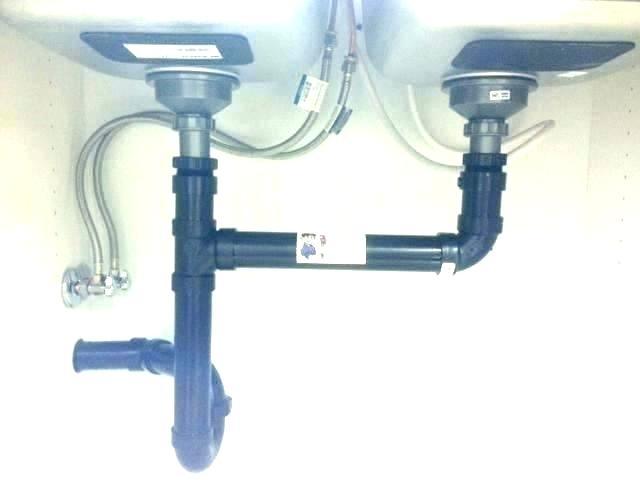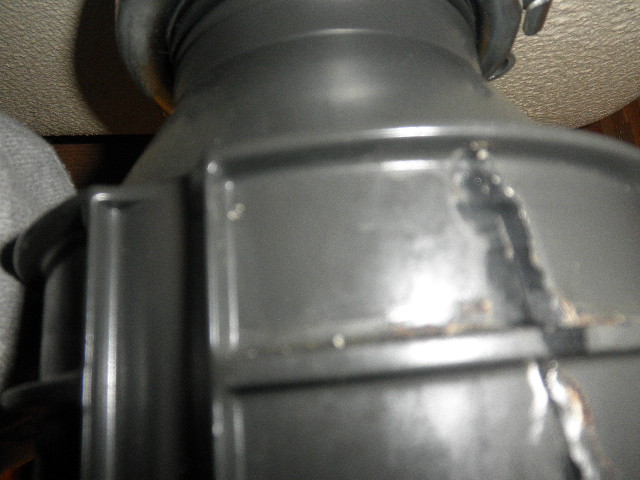Highly-Rated Tips for Fixing a Leaking Waste Disposal Unit
Highly-Rated Tips for Fixing a Leaking Waste Disposal Unit
Blog Article
Here in the next paragraph you can discover a good deal of superb advice regarding The Handy Guide To Fixing Your Garbage Disposal Leaking.

Garbage disposals are crucial cooking area home appliances that help in taking care of food waste effectively. However, a dripping garbage disposal can be an aggravating and unpleasant issue to deal with. Luckily, many leakages can be fixed quickly with a couple of basic actions. In this write-up, we will go over just how to fix a dripping garbage disposal successfully.
Intro
Garbage disposals are set up under cooking area sinks and are designed to shred food waste into smaller pieces, enabling it to travel through the pipes system conveniently. While these devices are typically trusted, leakages can take place over time due to wear and tear, loose connections, or damage to the system.
Typical Reasons For Leaks in Trash Disposals
Worn Seals and Gaskets
Seals and gaskets play an important function in avoiding water from leaking out of the waste disposal unit. With time, these parts can wear away, causing leaks around the disposal unit.
Loose Links
The connections between the waste disposal unit and the plumbing system can become loosened in time, causing water to leak out throughout operation.
Splits or Holes in the Disposal Device
Physical damage to the garbage disposal, such as fractures or holes in the real estate, can also lead to leaks.
Recognizing the Source of the Leakage
Before trying to fix a leaking waste disposal unit, it is necessary to determine the resource of the leakage. This can typically be done with aesthetic assessment or by conducting easy examinations.
Visual Examination
Inspect the garbage disposal system thoroughly for any type of indicators of water leak. Pay close attention to areas around seals, gaskets, and connection points.
Evaluating for Leaks
One means to examine for leakages is by running water with the disposal system and looking for any kind of visible signs of leakage.
Tools and Products Needed for Repairing a Leaking Garbage Disposal
Before starting the repair procedure, collect the necessary devices and products, including a screwdriver, adjustable wrench, plumbing's putty, replacement seals or gaskets, and epoxy or patching product for repairing cracks or openings.
Step-by-Step Overview to Taking Care Of a Leaking Waste Disposal Unit
Shut off the Power
Before trying any type of repairs, make certain that the power to the garbage disposal unit is shut off to prevent the danger of electric shock.
Situate the Leak
Recognize the exact area of the leak and figure out the cause.
Tighten Links
Use a wrench to tighten up any loosened links between the disposal system and the pipes system.
Change Seals or Gaskets
If the leak is because of used seals or gaskets, remove the old parts and change them with new ones.
Patching Cracks or Holes
For fractures or openings in the disposal device, use epoxy or a suitable patching material to seal the damaged location.
Testing the Garbage Disposal After Repair Work
Once the fixing is full, evaluate the garbage disposal by running water through it to guarantee that the leak has been fixed.
Preventive Upkeep Tips to Stay Clear Of Future Leaks
To avoid future leaks, it is essential to perform normal maintenance on your waste disposal unit. This consists of keeping it tidy, preventing putting non-food things or hard things down the disposal, and regularly checking for leakages or various other concerns.
Conclusion
Finally, repairing a dripping waste disposal unit is a reasonably simple procedure that can be finished with basic devices and products. By following the steps laid out in this article and exercising precautionary maintenance, you can keep your garbage disposal in good working problem and stay clear of pricey repair work in the future.
What to Do About a Leaking Garbage Disposal
A leaking garbage disposal often goes unnoticed until you confront a sopping cabinet, a foul-smelling puddle, or an audible drip-drip-drip from the unit. The fix can be frustrating, too, because the leak can stem from a number of components in the system. Fortunately, with a little sleuthing, you can zero in on the leak and—depending on the exact location—stop the icky oozing and repair the component that caused it. Worst case scenario, if it turns out that the garbage disposal must be replaced, installing a new one is a reasonable do-it-yourself task for those with basic plumbing skills. Read on to keep the cash you’d otherwise hand over to a pro.
Prepare to find the leak
Prior to testing the garbage disposal for leaks, unplug it at the wall outlet and turn off the power from the breaker box to prevent electrical shock. Then insert a watertight sink stopper into your sink drain and wipe the unit dry with a clean cloth. In any handy container, mix a few drops of food coloring into a few cups of water, and pour the dyed water onto the sink stopper to help you locate the leak.
Investigate the source
the top, where the disposal meets the sink drain the side, where the dishwasher hose or main drain pipe connects to the disposal or the bottom of the unit Inspect each of these locations while gliding a light-colored rag over the unit; the dyed water will readily show on the rag and reveal the location of the leak. If a leak isn’t immediately apparent, remove the sink stopper and pour a few more cups of dyed water down the sink drain, then check for leaks again. Leaks near the top of the unit are more likely to show themselves while the sink is plugged, while side and bottom leaks are more noticeable while the sink is unplugged.
The metal sink flange that sits directly inside the sink drain is typically sealed around the top with plumber’s putty (a clay-like sealant) and then secured from under the sink with bolts. If the plumber’s putty deteriorates, or the bolts loosen, the flange can no longer form a watertight seal between the sink drain and the disposal—which could cause a leak at the top of the unit.
To reseal the leaky flange, you must first detach the garbage disposal. Start by loosening the screws securing the main drain pipe to the disposal, then loosen the screws in the metal clamp securing the dishwasher hose to the disposal and detach the drain pipe and dishwasher hose from the disposal. Loosen the screws in the mounting ring that connects the disposal to the metal mounting assembly beneath the sink, then pull down the disposal and carefully set it on a clean, dry surface. Loosen the bolts in the mounting assembly with a wrench, then pull down the mounting assembly and set it near the disposal.

Do you appreciate more info about Tips on Fixing a Leaking Garbage Disposal? Try to leave a remark directly below. We would be pleased to see your opinion about this blog post. We are looking forward that you visit us again before long. Please take the opportunity to distribute this content if you enjoyed it. I value reading our article about Why Is My Garbage Disposal Leaking From the Bottom?.
Start Now Report this page